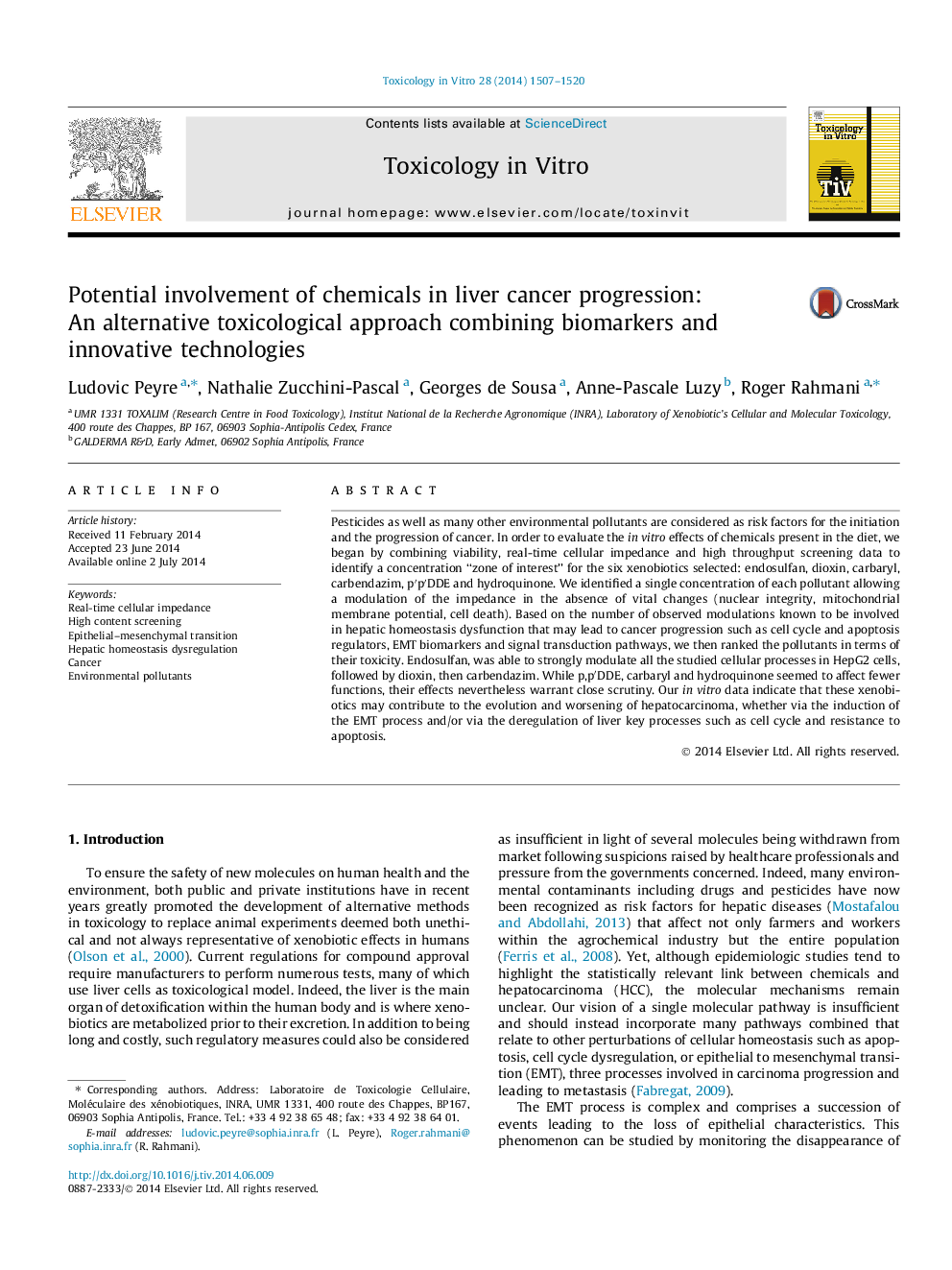| Article ID | Journal | Published Year | Pages | File Type |
|---|---|---|---|---|
| 5861862 | Toxicology in Vitro | 2014 | 14 Pages |
Abstract
Pesticides as well as many other environmental pollutants are considered as risk factors for the initiation and the progression of cancer. In order to evaluate the in vitro effects of chemicals present in the diet, we began by combining viability, real-time cellular impedance and high throughput screening data to identify a concentration “zone of interest” for the six xenobiotics selected: endosulfan, dioxin, carbaryl, carbendazim, pâ²pâ²DDE and hydroquinone. We identified a single concentration of each pollutant allowing a modulation of the impedance in the absence of vital changes (nuclear integrity, mitochondrial membrane potential, cell death). Based on the number of observed modulations known to be involved in hepatic homeostasis dysfunction that may lead to cancer progression such as cell cycle and apoptosis regulators, EMT biomarkers and signal transduction pathways, we then ranked the pollutants in terms of their toxicity. Endosulfan, was able to strongly modulate all the studied cellular processes in HepG2 cells, followed by dioxin, then carbendazim. While p,pâ²DDE, carbaryl and hydroquinone seemed to affect fewer functions, their effects nevertheless warrant close scrutiny. Our in vitro data indicate that these xenobiotics may contribute to the evolution and worsening of hepatocarcinoma, whether via the induction of the EMT process and/or via the deregulation of liver key processes such as cell cycle and resistance to apoptosis.
Related Topics
Life Sciences
Environmental Science
Health, Toxicology and Mutagenesis
Authors
Ludovic Peyre, Nathalie Zucchini-Pascal, Georges de Sousa, Anne-Pascale Luzy, Roger Rahmani,
